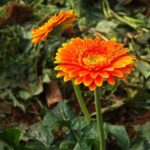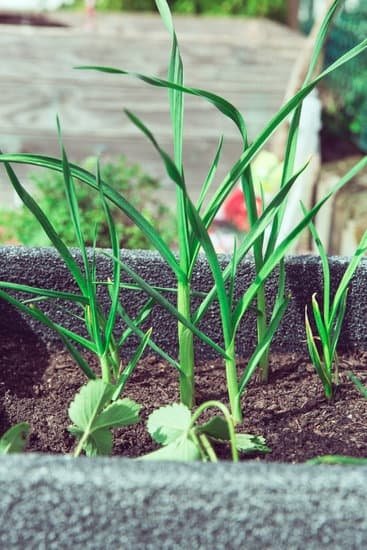Are you interested in starting your own veggie container gardening? Whether you’re limited on space or just want the convenience of growing your own fresh produce, veggie container gardening is a great option. In this article, we’ll explore some innovative veggie container gardening ideas that will help you grow delicious and nutritious vegetables right at home.
Veggie container gardening involves growing vegetables in containers such as pots, buckets, or planters instead of traditional garden beds. This method is perfect for small spaces like balconies, patios, or even kitchen counters. The benefits of veggie container gardening are numerous – it allows you to have complete control over the growing environment, requires less maintenance than traditional gardens, and provides the flexibility to move your plants around as needed.
By choosing the right containers for your veggie gardening needs and selecting the best location for them, you can ensure the success of your plants. Additionally, essential tools and supplies are necessary for proper maintenance and care. We’ll also discuss the best vegetables to grow in containers and provide tips on soil composition and watering techniques to help your plants thrive. Get ready to enjoy a bountiful harvest with these creative ideas.
Choosing the Right Containers for Veggie Gardening
When it comes to veggie container gardening, choosing the right containers is crucial for the success of your plants. The most important factor to consider when selecting containers for veggie gardening is size. Your containers need to be large enough to accommodate the root systems of the vegetables you wish to grow. As a general rule, most vegetable plants require a container that is at least 12 inches deep and 12 inches in diameter.
In addition to size, you’ll also want to consider the material of your containers. While plastic pots are lightweight and easy to move around, they can heat up quickly in direct sunlight, potentially damaging your plants’ roots.
Terra cotta pots are durable and provide good insulation for plant roots, but they can be heavy and may dry out more quickly than other materials. Consider your climate and the specific needs of the vegetables you plan to grow when choosing the best container material for your garden.
Lastly, consider the drainage capabilities of your containers. Proper drainage is essential for preventing waterlogged soil and root rot in veggie container gardening. Look for pots with drainage holes in the bottom, or be prepared to drill your own if necessary. Ensuring adequate drainage will help promote healthy root development and overall plant growth.
Selecting the Best Location for Your Veggie Containers
When it comes to veggie container gardening, the location of your containers is crucial to the success of your crops. The right location can make a significant difference in the growth and yield of your vegetables. Here are some tips for selecting the best location for your veggie containers:
1. Sunlight: Most vegetable plants require at least 6-8 hours of sunlight per day. Choose a location for your containers that receives adequate sunlight, such as a south-facing balcony or patio. If you have limited access to sunlight, consider growing vegetables that can thrive in partial shade, such as leafy greens and herbs.
2. Wind and Temperature: Consider the wind patterns in your chosen location. Strong winds can topple over tall or top-heavy containers, so look for a spot that offers some protection from strong gusts. In addition, pay attention to temperature fluctuations – avoid areas with extreme heat or cold that could stress your plants.
3. Accessibility: Make sure your veggie containers are placed in an area that is easily accessible for watering, pruning, and harvesting. You don’t want to have to trek across your garden or balcony every time you need to tend to your plants.
4. Space: Take into account the space requirements of the vegetables you plan to grow. Some crops, like tomatoes and peppers, need more room to spread out while others, like radishes and lettuce, can be grown in closer quarters.
By carefully considering these factors when choosing the location for your veggie containers, you’ll be setting yourself up for a successful container garden filled with bountiful harvests of fresh, homegrown produce.
Remember also that gardening is fun. Enjoy selecting beautiful containers and deciding on just the right place within our home where they may enhance either form or function There are many ways other than traditional gardens where we can use our skills both creatively and successfully – all year too if we live in an area with long mild seasons.
Essential Tools and Supplies for Veggie Container Gardening
When starting a veggie container gardening project, it is important to have the right tools and supplies to ensure a successful harvest. Some essential tools for veggie container gardening include hand trowels, pruners, watering cans or hoses with a spray nozzle, and gloves to protect your hands. These tools will help you plant and maintain your vegetables in containers effectively.
In addition to tools, having the right supplies is crucial for veggie container gardening. This includes high-quality potting soil that is specifically formulated for container gardening, as well as organic fertilizer to provide essential nutrients to your plants.
It’s also important to have sturdy containers that are large enough for the root systems of the vegetables you plan to grow. Proper drainage in the containers is also essential, so make sure to have gravel or small rocks on hand.
Veggie container gardening can be a rewarding and enjoyable way to grow your own food, but having the essential tools and supplies is key to success. With the right equipment and materials, you can create a thriving vegetable garden on your patio, balcony, or any small outdoor space. By investing in these essentials, you’ll be well-prepared to start your veggie container gardening journey and enjoy fresh produce right at home.
| Tools | Supplies |
|---|---|
| Hand trowels | Potting soil |
| Pruners | Organic fertilizer |
| Watering cans/hoses | Sturdy containers with proper drainage |
| Gloves | Gravel or small rocks |
Best Vegetables for Container Gardening
When it comes to veggie container gardening, there are several vegetables that are well-suited for growing in containers. Not all vegetables thrive in a confined space, so it’s essential to choose the right ones for your container garden. Here are some of the best vegetables to consider for your veggie container gardening project:
- Tomatoes – There are many varieties of tomatoes that can be successfully grown in containers, including cherry tomatoes, beefsteak tomatoes, and roma tomatoes.
- Peppers – Bell peppers and hot peppers like jalapeños and habaneros do well in containers, as long as they receive plenty of sunlight.
- Lettuce – Leafy greens like lettuce, spinach, and arugula are perfect for container gardening and can be continuously harvested throughout the growing season.
- Cucumbers – Compact varieties of cucumbers can thrive in containers with proper support for climbing vines.
- Green Beans – Bush beans are an excellent choice for container gardening, producing a bountiful harvest within a limited space.
In addition to these popular choices, other veggies that do well in containers include radishes, carrots, eggplant, and herbs such as basil, parsley, and cilantro. When selecting vegetables for your container garden, consider the size of the mature plant and the depth of the container needed for optimal growth.
It’s important to remember that not all vegetable plants are suitable for container gardening. For instance, corn and pumpkins require a large amount of space to grow and may not be practical for growing in containers. By choosing the best vegetables for your veggie container gardening project, you can ensure a successful and productive harvest.
Tips for Proper Soil and Watering in Veggie Container Gardening
When it comes to successful veggie container gardening, proper soil and watering are essential for the health and growth of your plants. Using the right soil mix is crucial for providing adequate nutrients and support for your vegetables. Look for a high-quality potting mix that is specifically formulated for container gardening. These mixes are designed to provide good drainage, aeration, and moisture retention, which are all important factors in keeping your veggies healthy.
In addition to using the right soil mix, proper watering is equally important in veggie container gardening. Overwatering can lead to root rot and other diseases, while underwatering can cause stress and stunted growth in your plants. The best way to ensure proper watering is to check the moisture level of the soil regularly.
Stick your finger about an inch into the soil – if it feels dry, it’s time to water. The frequency of watering will depend on factors such as the type of vegetable, the size of the container, and environmental conditions.
It’s also important to note that certain vegetables have different water requirements. For example, leafy greens like lettuce and spinach need more frequent watering than root vegetables like carrots or beets. Understanding the specific needs of each vegetable in your container garden will help you maintain optimal soil moisture levels and promote healthy growth.
| Soil & Watering Tips | Data |
|---|---|
| Soil Mix | Use high-quality potting mix formulated for container gardening |
| Watering | Check soil moisture regularly; adjust frequency based on vegetable needs |
Creative and Innovative Container Ideas for Veggie Gardening
When it comes to veggie container gardening, the possibilities are endless when it comes to choosing containers. Not only do they serve a functional purpose, but they can also add a decorative touch to your garden or living space. Here are some creative and innovative container ideas for veggie gardening that you can consider for your own garden.
Repurposed Items
One of the most creative ways to container garden is by using repurposed items that you may already have lying around. Old buckets, crates, baskets, or even old cooking pots can make great containers for growing veggies. Not only does this help reduce waste, but it also adds a unique and eclectic look to your garden.
Vertical Gardening
If space is limited, vertical gardening is a fantastic solution for growing veggies in containers. Using wall-mounted planters, hanging baskets, or even a trellis system can maximize your growing space while adding visual interest to your outdoor area. This approach is not only practical but it also creates a stunning focal point in any garden.
Self-Watering Containers
For those who may have a busy lifestyle or simply want an easier way to maintain their veggie containers, self-watering containers are an innovative option. These containers come with reservoirs that hold water, allowing the plants to draw moisture as needed. This self-sufficient method ensures that your veggies receive consistent hydration without you having to water them every day.
Considering these creative and innovative container ideas for veggie gardening will not only add charm and personality to your garden but also provide an environment conducive for growing healthy and abundant vegetables. Whether you choose repurposed items, implement vertical gardening techniques, or invest in self-watering containers, the key is finding the right fit for your space and needs.
Maintenance and Care for Veggie Containers
Maintaining and caring for your veggie containers is essential to ensure a successful harvest. This involves managing pests and providing proper fertilization for the vegetables to thrive.
Pest Control
One of the challenges in veggie container gardening is dealing with pests that can damage or even destroy your plants. It’s important to regularly inspect your containers for any signs of pests such as aphids, caterpillars, or snails. To control these pests, you can use natural remedies like neem oil spray, insecticidal soap, or introducing beneficial insects such as ladybugs or parasitic wasps. These methods can help keep the pest population under control without using harmful chemicals.
Fertilization
Proper fertilization is crucial for the healthy growth of vegetables in containers. Since the nutrients in the soil can deplete over time, it’s important to regularly feed your plants with a balanced fertilizer. Look for a fertilizer specifically formulated for vegetables and follow the instructions on the packaging for application. Additionally, consider using organic fertilizers such as compost or worm castings to provide a slow-release source of nutrients for your veggies.
By implementing these maintenance and care practices for pest control and fertilization, you can ensure that your veggie container gardening efforts are well-protected from pests and receiving the necessary nutrients for healthy growth. With proper care, you’ll be able to enjoy a bountiful harvest of fresh vegetables from your container garden.
Harvesting and Enjoying the Fruits of Your Veggie Container Gardening Efforts
In conclusion, veggie container gardening is a rewarding and convenient way to grow your own fresh produce, even if you have limited space. By utilizing the right containers, selecting the best location, and using proper soil and watering techniques, you can successfully grow a variety of vegetables in containers. From tomatoes and peppers to lettuce and herbs, there are plenty of options for your veggie container garden.
As you enjoy the process of caring for your veggie containers and watching your plants thrive, it’s important to also think about pest control and fertilization to ensure a healthy harvest. By monitoring for pests and diseases, as well as providing the necessary nutrients through fertilization, you can maintain the health and productivity of your veggie container garden.
Once your veggies are ready for harvest, it’s time to savor the fruits of your labor. Whether you’re enjoying a freshly picked salad or cooking with homegrown ingredients, there’s nothing quite like the taste of vegetables that you’ve grown yourself. So get creative with your veggie container gardening ideas and start reaping the benefits of growing your own delicious produce at home.
Frequently Asked Questions
What Vegetables Grow Well Together in a Container?
Some vegetables that grow well together in a container include tomatoes, basil, and peppers. These plants complement each other’s growth habits and can thrive when planted together in a limited space.
What Vegetables Are Good to Grow in Containers?
Many vegetables are good to grow in containers, including cherry tomatoes, lettuce, radishes, green beans, and bell peppers. These vegetables have compact growth patterns and can thrive in the confined space of a container.
What Is the Easiest Vegetable to Grow in a Container?
The easiest vegetable to grow in a container is arguably lettuce. Lettuce has shallow roots, making it well suited for container growth. It also has a relatively short growing season and can tolerate varying light conditions, making it an ideal choice for beginner container gardeners.

Welcome to my gardening blog! I am passionate about plants and enjoy sharing my knowledge and experiences with others. In this blog, I will write about everything related to gardening, from tips on how to get started to updates on my own garden projects.





